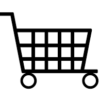
Manufacturing KPIs & Metrics
If you can measure it, you can understand it. If you can understand it, you can control it. If you can control it, you can improve it.
Measurement is the first step that leads to control and eventually to improvement! – H James Harrington.
In this article, we are going to discuss the importance of KPIs for manufacturing companies and examples of various manufacturing KPIs that can be used to monitor, control, analyze and optimize the processes as well as meet the objectives of your organization.
What are Key Performance Indicators (KPIs)?
Key Performance Indicators or KPIs measure how you are performing as compared to the key business objectives or goals of your organization; whether you are on track to achieve, behind your target, or have achieved your KPIs.
Why are Manufacturing KPIs Important?
Manufacturing as a core business process uses raw materials, consumables, components, parts, plant & machinery, manpower, money, to produce finished goods. Thus manufacturing is a crucial process that impacts the quality of the product, price of the product, and therefore the image and reputation of the company. By defining appropriate Manufacturing KPIs for monitoring and controlling, continuously measuring performance, you can ensure optimum utilization of the resources as well as consistent quality to customers.
How to define KPIs?
KPIs should be SMART, which means; they should be specific, measurable, attainable, relevant and time-bound. You should keep in mind the following points while defining the KPIs for your organization.
- What is the desired outcome?
- How will you measure the progress?
- Who is responsible for this outcome?
- How often will you review progress?
Which Manufacturing KPIs should be measured and tracked for continuous improvement?
We have compiled a list of various manufacturing key performance indicators & metrics (KPIs) which are important to measure and control for a manufacturing organization. These will cover important processes, departments, and functions such as plant & machinery, inventory, purchases, sales, quality, and customers.
1. PLANT AND MACHINERY RELATED KPIs
 Plant & machinery are at the heart of a manufacturing organization. You must ensure their optimum performance and efficiency for the smooth functioning of production and timely delivery. Here are some important KPIs you can measure :
Plant & machinery are at the heart of a manufacturing organization. You must ensure their optimum performance and efficiency for the smooth functioning of production and timely delivery. Here are some important KPIs you can measure :
a. Capacity Utilization:
Are you making the best use of your plant & machinery? How much plant capacity are you utilizing? Higher utilization is better for the company.
Example: Increase capacity utilization from 70% to 80% by 01/04/2020
b. Overall Equipment Efficiency:
How efficiently are your machines performing?
Example: Improve OEE from 90% to 100% by 01/04/2020
c. Machine Downtime:
How many times was there a downtime? What were the reasons? Plan regular and scheduled maintenance to ensure the best performance of machinery and reduce unscheduled downtime.
Example: Reduce unscheduled downtime from 6% to 4% by 01/04/2020
2. INVENTORY KPIs
 Inventory is extremely important to ensure materials are available at the right time to the right production process. You must avoid situations of a shortage of stock that can halt production; as well as excess stock lying in the warehouse, as it impacts your working capital and resultantly the profitability. Following are some important inventory KPIs to track:
Inventory is extremely important to ensure materials are available at the right time to the right production process. You must avoid situations of a shortage of stock that can halt production; as well as excess stock lying in the warehouse, as it impacts your working capital and resultantly the profitability. Following are some important inventory KPIs to track:
a. Inventory Turnover ratio:
Inventory turnover is calculated as sales/average inventory. A low turnover implies lower sales & higher inventory.
Example: Increase inventory turnover ratio from 8 to 10 by 01/04/2020
b. Inventory Accuracy:
Inventory accuracy is measured by taking a physical count of items in stock and compared with your records.
Example: Continue to achieve 80% or more inventory accuracy by 01/04/2020
c. Waste Reduction:
Some amount of raw material inevitably gets wasted in manufacturing processes. The aim is to keep the wastage to the minimum possible. Hence track the amount of scrap generated as compared with the raw materials used.
Example: Lower scrap from 12% to 10% by 01/04/2020
3. PURCHASE OR PROCUREMENT KPIs
 Purchasing involves procurement of raw materials, consumables, capital items and so on. All these are crucial elements of the manufacturing process. The purchase also involves suppliers & costs. Hence Purchase KPIs include purchase, supplier & cost KPIs such as:
Purchasing involves procurement of raw materials, consumables, capital items and so on. All these are crucial elements of the manufacturing process. The purchase also involves suppliers & costs. Hence Purchase KPIs include purchase, supplier & cost KPIs such as:
a. Purchase Order Cycle Time:
The time gap between the time purchase order is raised to the time it is sent out to the vendor is the Purchase order cycle time. Digitizing and automating your purchases with an eProcurement solution provides transparency, notifications for approvals and helps reduce purchase order cycle time from days to hours.
Example: Reduce Purchase Order Cycle Time from 3 days to 1 day by 01/07/2020
b. Average Cost of Processing a Purchase Order:
Each purchase order requires some time and effort for creating it, approving it, changing it and so on. E.g. if an employee wants to generate a purchase order, he spends time finding out the relevant suppliers, sending requirements, receiving quotations, preparing comparative statements, carrying our negotiations, generating purchase orders and obtaining approvals. This whole process may take sizeable effort of one or two man days of all relevant people involved which is cost to the company. Automating this process will help lower your average cost of processing a purchase order and free up your resources time to focus on increasing supplier base, carrying out costs negotiations, etc.
Example: Reduce Average Purchase Order Processing Cost from Rs. 250 to Rs. 150 by 01/07/2020
c. Suppliers KPI Number of vendors:
Depending on very few suppliers is risky for any manufacturing organization. You should ensure a healthy number of suppliers for all item categories to ensure good terms & prices
Example: Increase no. of suppliers from 125 to 175 by 01/07/2020
d. Supplier Ratings:
Suppliers’ performance is rated on various parameters such as response rate, on-time delivery of material, quality of material, invoice accuracy, etc. To perform better you should have suppliers who comply with all possible requirements. Your supplier performance will ensure you can provide timely delivery and consistent quality to customers.
Example: Ensure suppliers improve ratings from 4.5 to 6 (on a scale of 1to10) by 01/07/2020
e. Cost Reduction:
Cost Reduction is the difference between current Purchasing Price as compared to the Last Purchasing Price. This reflects the hard savings or tangible savings of a manufacturing company.
Example: Achieve 10% Cost Reduction by 01/07/2020
f. Cost avoidance:
Refers to cost savings resulting from rate contracts, price protection, negotiation after initial quotes, asking for add-on services, finding equivalent yet economic substitutes, etc. These are also called soft savings and are difficult to measure.
Example: All C Class items should have a rate contract OR All purchase requirements should have at least 3 quotes from vendors with at least one round of negotiations
g. Procurement ROI:
Procurement ROI is a clear indicator of the performance of the purchase or procurement department. It takes into consideration the sum of cost reduction and the cost avoidance achieved after incurring the total spend on procurement operation.
Procurement ROI = (Cost Reduction + Cost Avoidance)/Cost of Procurement Operation
Example: Increase Procurement ROI from 20 to 25 by 01/12/2020
4. SALES KPIs
 Sales define a company’s success. Manufacturing companies produce based on their demand. When sales teams can create a higher demand for their products, it will result in higher sales and effectively higher profits. The sales process involves lead generation, follow-up, and sales closure. We have depicted some KPIs related to each stage of the sales process. Read more about the Importance of Sales KPIs
Sales define a company’s success. Manufacturing companies produce based on their demand. When sales teams can create a higher demand for their products, it will result in higher sales and effectively higher profits. The sales process involves lead generation, follow-up, and sales closure. We have depicted some KPIs related to each stage of the sales process. Read more about the Importance of Sales KPIs
a. No. of. Leads target vs. Actual:
A company needs to have a sufficient number of leads in the pipeline. This is the calculation of targeted leads compared with actual leads per month.
Example: Generate 50 qualified leads per month
b. Activity per sales representative:
This includes activities such as phone calls, emails, demos, presentations, proposals, follow-up and so on. This is usually used to monitor the progress of the sales team towards accomplishing their goals. A large amount of activity with low conversions indicates a requirement for process improvement or sales coaching.
Example: Reduce the average number of sales activities per order from 10 to 8
c. Qualified Lead to Win Conversion Rate:
A sales team is considered effective when it can convert a higher number of qualified leads into paying customers.
Example: Improve the conversion rate from 4% to 6% by 01/07/2020
d. Average sales cycle:
It is the time gap between the first touchpoint with a prospect until the date when the deal is finally signed. This is calculated as the average time taken for all deals won.
Example: Reduce the average sales cycle time from 3 months to 2 months by 01 /07/2020
e. Monthly Sales Target Revenue:
This is calculated based on the annual revenue targets you have set for your organization. If there is any peak period and slack period you need to factor in those elements and set the monthly target as a percentage of your goals.
Example: Achieve monthly sales revenue target of Rs. 50 Million before 30/31 of every month
f. Product Performance:
If a company has only a product to sell, this will not be relevant. However, when a company has more than one product, of varying prices, then it will surely define separate sales targets for each product range and then compare the performance against goals as well as the sales of one product range opposed to the other to determine which is more profitable.
Example: Product A should contribute about 50% of the total sales revenue.
5. QUALITY KPIs
 Customers constantly expect high-quality products. Quality is, therefore, the defining make or break factor of a product. It is the most important metric to track. You may like to track Quality KPIs such as:
Customers constantly expect high-quality products. Quality is, therefore, the defining make or break factor of a product. It is the most important metric to track. You may like to track Quality KPIs such as:
a. Percentage Defect:
100% perfection is almost impossible in manufacturing. Some amount of defects are considered normal. Keeping the defect ratio to a bare minimum is advisable.
Example: Lower the defect ratio from 7% to 5% by 01/04/2020
b. Failed Audits:
Are you producing quality products? Do your products consistently clear the quality audits? If not, strive hard to make sure the failed audits are down to zero.
Example: Bring down the failed audits to 0 by 01/12/2020
6. CUSTOMER KPIs
 Every business flourishes only when their customers are happy. Hence, it is imperative to ensure timely product deliveries and carry out customer surveys to gather feedback for continuous product improvement.
Every business flourishes only when their customers are happy. Hence, it is imperative to ensure timely product deliveries and carry out customer surveys to gather feedback for continuous product improvement.
a. On-Time Deliveries:
Make sure your products reach the customers at the scheduled time.
Example: Increase on-time delivery rate from 90% to 95% by 01/12/2020
b. Customer Returns:
The ideal goal is to have zero customer returns. However, realistically it should be kept to the minimum possible, as close to zero as possible.
Example: Reduce customer returns from 9% to 7% by 01/09/2020
c. Customer Reviews:
Example: Increase average customer review from 3.5 to 4.5 (scale of 1 to 5) by 01/12/2020
7. EMPLOYEE KPIs
 Any organization is only as good as its team of employees. When employees perform well, adhere to quality standards, the manufacturing processes will run smoothly and the end product will be of great quality.
Any organization is only as good as its team of employees. When employees perform well, adhere to quality standards, the manufacturing processes will run smoothly and the end product will be of great quality.
Companies that provide a healthy conducive working environment, constantly provide opportunities to learn & grow with training, applaud employees’ efforts with rewards and recognition and use innovative ways for engaging employees are likely to have more satisfied employees. Some Employee KPIs you may like to track are:
a. Employee Turnover Ratio:
When employees leave an organization, it impacts the regular functioning of the organization. Unhappy employees are more likely to leave the company. Higher the employee turnover, the higher will be the cost of hiring and training new employees.
Example: Reduce employee turnover ratio from 15% to 10% by 01/12/2020
b. Training Hours:
Training is used as a mechanism for sharpening employee skills, improving their efficiency and enhancing product quality. If you continuously provide opportunities for new learning and challenging work, it may also reduce employee turnover.
Example: Increase per employee training hours from 1 hour to 3 hours per month.
c. Revenue per Employee:
Every employee contributes to his or her role in company revenue. Calculating revenue per employee helps to understand the efficiency of human resources.
Example: Increase revenue per employee by 15% up to 01/12/2020
Summary
Key Performance Indicators (KPIs) are powerful tools to monitor, control and analyze the performance of the organization. It will help you to stay focused and on track to achieve your key business objectives. However, please keep in mind, that merely defining KPIs will not work. You have to imbibe a culture in the company that everyone has to work towards the KPIs. You must monitor and review KPIs weekly, monthly or quarterly as agreed upon. Organizations should focus on the Manufacturing KPIs to achieve operational excellence, grow and scale business.
Implement effective monitoring & controlling with KPIs.
Request a Demo of ERP Software Now!

